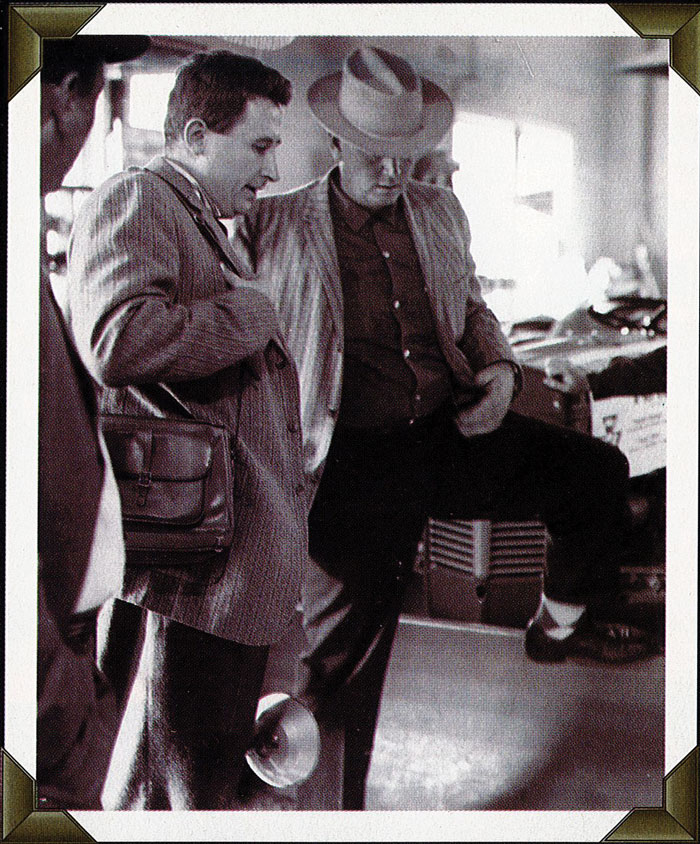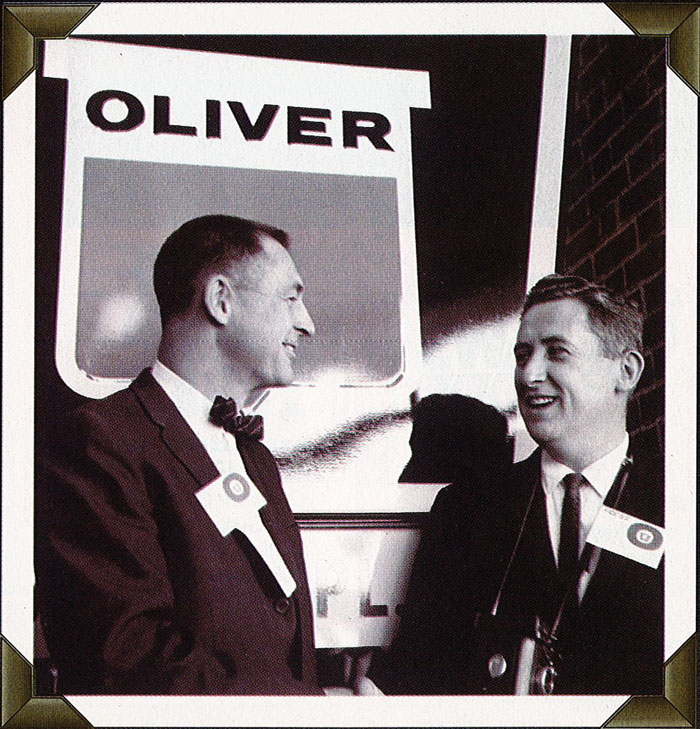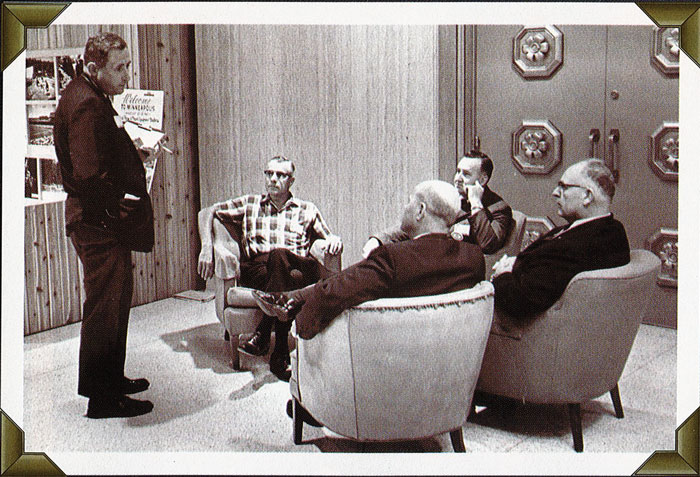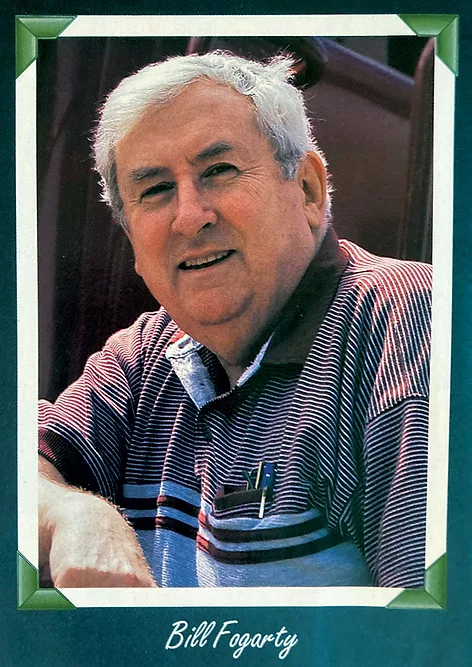Editor's note: This article originally appeared in the Farm Equipment November/December 1998 issue.
By Bill Fogarty
This may get me in trouble for who and what I'm leaving out. But I want to share a few recollections with readers and talk about some important things that happened and people I met over the years - though I may not have recognized their significance at the time. The people mentioned here get no silver cups to put on the mantel, just my admiration.
Best association manager
I apologize in advance to all the association managers I have known, active, deceased or retired. In a field of endeavor in which grandstanding is not unknown, I have to give it to a soft-spoken guy, Emmett Barker, who has been running the Equipment Manufacturers Institute for around 25 years.
Despite the disappearance of member firms over the years (such as IH, the old New Holland, etc.), he kept an excellent staff and delivered important services. He stocks his working meetings with speakers of substance, and when it comes to question time, he often serves up pithy ones that get to the heart of the issue.
He's good at alerting his members to key legislative and regulatory matters and mustering up a solid presentation of their side of the issue. They usually respond well, but when they don't pay attention, they may get something like warranty reimbursement legislation.
Not everyone in this business will have the same take on industry issues that EMI has, but nobody can challenge Emmett's savvy in getting his group's messages across. He does more than that, though. He works very hard at getting dialog going between parties with opposing views. You can't ask for much more than that.
Dealer I most admire
Tom Scott, Monroe, LA, built a great farm and construction equipment empire in Louisiana as a Case dealer. He also formed several other successful enterprises in a career that has been going on now for over a half century. Naturally, I admire him for his skill and foresight in doing all of what he's done.

Bill visits a Massey dealership in Kearny, NE. The date is January, 1959 and a 30-year-old Fogarty stands with Ron Luth in front of a new Massey tractor in the showroom.
But what I admire him the most for is the fun he has had doing it. I remember, for instance, the pleasure and enthusiasm with which he told an EMI parts committee about how he had gone into the parts salvage and rebuilding business in the early 1980s.
What you do for a living is supposed to return more to you than just money. Even when times are tough, you're supposed to feel good about doing battle against the forces arrayed against you. Trouble is, too many of us have to do battle with the demons inside us. Anyway, may this business have more happy warriors like Tom Scott.
Dealer most ahead of his time
Does anyone remember Orhan (Turk) Yirmibesh of Clinton and Avalon, WI? No, Turk did not have the most progressive shop or the most brilliant sales compensation plan or the most dazzling showroom floor.
But he understood the values a dealer can offer a customer beyond the iron itself. He got an Oliver franchise after World War II and soon noted the presence of a number of vegetable canneries in the area. He found out that they would be interested in leasing tractors on a short-term basis, usually seven months. So he launched a program to accommodate them and then, when the tractors came back, he sold them to farmers in his area at very attractive prices. Everyone was happy, and he had provided something special to all parties.
“What you do for a living is supposed to return more to you than just money. …”
And today, about 50 years later, some dealers understand what Turk did back then: You can get by as a provider of machines and services, but it's also possible to provide another very great value - the flexibility that many customers need with regard to the use of their money.
This is what auto dealers learned a long time ago. Not many in the farm equipment business have seen what Turk saw in the 1940s.
Company most admired by me
It's the old New Holland, the hay tools specialist in North America and combine giant in Europe, before they were what they are today. Nothing wrong with today's New Holland, but the old one was a remarkable competitor. They always managed to lodge themselves in tractor dealerships whose main franchise already included a line of hay tools. New Holland people came in with excellent products and took great pains to see that their dealers made money selling them. And they listened to their dealers.

Bill attends Oliver's new product Introduction in 1962. Here he is pictured with Sam White Jr., who was president of Oliver at the time.
At the end of any season, New Holland and its dealers were pretty much out of inventory. They and their dealers had done an excellent job of anticipating what the market would bear that year - and acted accordingly. How do you suppose that happened? Could it be because they listened so carefully to their dealers?
My best competitor
There are two divisions to this one.
Best editorial competitor was Glenn Hensley, who produced Farm & Power Equipment for NFPEDA (now NAEDA) from 1960 to 1979. At l&T, we saw the competition come out with excellent action photos of life in dealerships and easy-toread stories to go with them. We got management to pop for better photo equipment, but mostly we got off our butts and worked a little harder.
Hensley is retired, but you'd never know it. He continues to do some freelance writing for this publication, and we like it that way.
Best sales competitor is now somebody who is, thankfully, on the same side I'm on. He didn't change; I did. Jim Rank joined the fledgling Farm Equipment in 1970. Meanwhile, through the profitable 1970s, the owners of I&T, Intertec Publishing until 1986, were building a magazine publishing empire, and I&T was performing cash-cow services. Cash cowing is OK, provided you don't skimp too much on the alfalfa.
“You can get by as a provider of machines and services, but it's also possible to provide another very great value - the flexibility that many customers need with regard to the use of their money. …”
When the contractions of the 1980s set in, I&T management didn't realize it was in a fight for the shrinking ag machinery ad market until it was too late. Even then, I&T might have prevailed over Farm Equipment, but Jim Rank was a relentless competitor. Frankly, a lot of I&T people were sitting around grumbling while Rank was seeking and finding new business.
Rank continued to beat the sox off of I&T. Intertec decided to sell off I&T. A few years later, I was offered a chance to join Farm Equipment and I jumped at it. Rank was there to welcome me aboard. I'm glad that we're on the same side now.
Best chief executive officer
William Hewitt was chairman of Deere & Co. from 1955 to 1982, when he retired. He joined a company that was safely in first place, but he kept moving it forward. He got the company more active on the world stage. He made some excellent decisions about the future of agriculture and companies that supplied it.
For instance, he understood before most others did that big farming operations were going to dominate in North America and saw to it that the planning went accordingly. It sounds easy today, but things weren't so clear four or five decades ago. He let his executives take risks and make important decisions; they knew that they could make an honest mistake and still be trusted. He once noted that "Babe Ruth struck out a lot, too."
When he retired, I am told he said to a meeting of his managers that one significant reason for Deere's success had been the ineptness of some of its competitors, and that they couldn't expect this advantage to be there always. He sure got that right.

Bill spent his 39th birthday in Minneapolis at the NFPEDA convention. We now know the group as NAEDA.
I can't stop there. I have to name two other CEOs I admired. They had vastly different challenges to face.
Sam White Jr. took over Oliver, sixth in a field of eight majors, in 1960. He built it up in eight years to a respectable, growing entity. He did it by concentrating on his dealer organization. He was totally straight with them as to what he expected and what he was trying to deliver. They listened to him and he listened to them.
Merritt Hill was running Ford Motor Co.'s Tractor Division in 1961 when he was recruited to head up the J. I. Case Corp. Case had been plundered and left with an out-of-date product line and a tattered dealer organization. In a year when Case had $172 million in sales, it sustained a $40 million loss. The creditor banks decided that Case owed too much to be allowed to die. Hill was hired and told to fix it.
He didn't fix it to the point of being a healthy and formidable competitor, but by his artful stifling of many bleeding wounds, he kept it afloat until it was bought by Kem County Land Co. (later acquired by Tenneco), and that's why Case survives today as one of the world's top three farm equipment makers.
So you see why I picked three. They all had different jobs to do and they did them well.
Best dealer use of talent
Drex Hatten became the IH dealer in Bethany, MO, and soon had the best market share in the area. The reason: He found a service manager who was great with people along with his other skills. When Drex was close to closing a deal, he'd bring in the service manager to explain the hydraulics to the customer. He was demo-ing his staff! The farmer was assured that he could deal with a service manager who knew what he was talking about.
“It's the talent in the dealership and how it's used that makes the difference.…”
He also had the service manager deliver major machines to the buyer's farmyard, where he'd give a little course on best use of the machine. This again reassured the customer about the dealership and had the effect of reducing the incidence of warranty calls.
This was in the mid-1960s. Not many dealers, and very few manufacturers, knew then what Hatten grasped at once. It's the talent in the dealership and how it's used that makes the difference. It even makes machines run better!
Best boss
George Seferovich was editor of l&T in 1958. He hired me as assistant editor, and it was the break of my life. He didn't just teach me about editing; he showed me that making the publication important and relevant to the reader - without pandering to get business - is the only way to survive in this business and go home each night with one's self-respect intact.
And I can't neglect Rich Reiff, who hired me for this job at Farm Equipment even though I was 61 years old. Not many people that age are offered such a great opportunity to do the work they like most.
Anyone else? Heavens, yes. I can't count all the great dealers, CEOs, marketers, engineers, salespeople, managers, consultants, journalists and publishers I met through this job. But I'm out of time and space.





